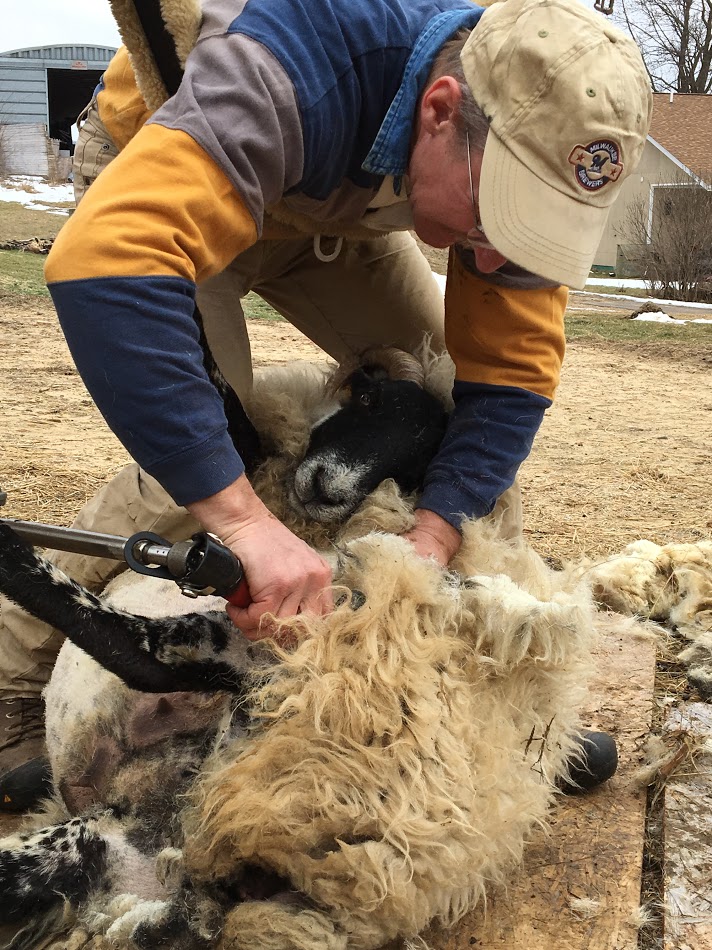Our flock of Scottish Blackface sheep has been shorn. We always used to shear after lambing was done, but it’s actually better to have clean-shaven ewes during lambing season — especially when you have hairy sheep like Scottish Blackface. The ewes are cleaner and it gives the lambs a better chance to latch onto a teat rather than a manure tag or a lock of wool.
The sheep will seek shelter when it’s cold — helping keep their lambs warmer — and are less likely to lay on their lambs. Plus, they take up less space once their thick coats are taken off.
Some years we have done some crutching, which is when you trim the wool from around the udder and rear end. But that was done mainly with a scissors and usually after the lamb was born.
When our flock was only four ewes, we did try to shear ourselves. But even though my wife was a highly successful salon owner for many years, shearing a wooly ovine is much harder than applying tonsorial skills to a human head. The clipper is a wicked thing that could easily mangle a finger or cut the sheep.
To quote the website sheep101.info
“Anyone can attempt to shear a sheep, but not everyone will do a good job. Shearing is a specialized skill. It is hard work. Shearing requires skill so that sheep are shorn efficiently without cuts or injuries to the sheep and shearer. If shearing is not carried out skillfully, it is stressful to the sheep. It is best to hire a professional shearer to shear sheep.”
We’re fortunate to have the skills of the aptly named Randy Schier, a shearer from the Granton area. Randy does an excellent job. It was mild enough for shearing day this year that we were able to set up outside.
We’re expecting lambs in a few weeks. Stay tuned!

